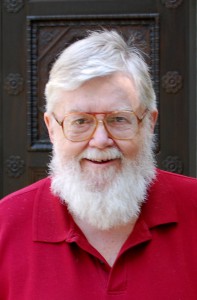 In the fall of 2010 I was in the midst of researching and writing the seventh and final volume in the Great Migration second series. The publication of that volume in 2011 would mean that sketches had been published for all Great Migration immigrants from 1620 to 1635, somewhat less than one-half of all those who came to New England during the entire Great Migration period, from 1620 to 1640. Given the quarter-century it has taken to reach this point in the Great Migration Study Project, I eventually, and reluctantly, concluded that I would not be the person to write the sketches for immigrants who arrived in New England between 1636 and 1640. And yet I did not want to abandon the Project at that point, and so began to cast about for a mechanism by which I could at least survey the remaining immigrants. Continue reading Compiling the Great Migration Directory
In the fall of 2010 I was in the midst of researching and writing the seventh and final volume in the Great Migration second series. The publication of that volume in 2011 would mean that sketches had been published for all Great Migration immigrants from 1620 to 1635, somewhat less than one-half of all those who came to New England during the entire Great Migration period, from 1620 to 1640. Given the quarter-century it has taken to reach this point in the Great Migration Study Project, I eventually, and reluctantly, concluded that I would not be the person to write the sketches for immigrants who arrived in New England between 1636 and 1640. And yet I did not want to abandon the Project at that point, and so began to cast about for a mechanism by which I could at least survey the remaining immigrants. Continue reading Compiling the Great Migration Directory
Tag Archives: Critical Analysis
Verify what? Part Two
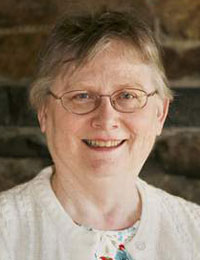 Collect and compare as many different published versions of the subject as you can. Often there is one old surname genealogy and/or a “dictionary” of settlers. Then there will be some accounts of different branches in some “all-my-ancestors” volumes (often seen in Torrey’s New England Marriages Prior to 1700 – see the new version of Torrey on americanancestors.org that now takes you to the image of the full page from the book, allowing you to see and print all of the entries with the same surname together.) Continue reading Verify what? Part Two
Collect and compare as many different published versions of the subject as you can. Often there is one old surname genealogy and/or a “dictionary” of settlers. Then there will be some accounts of different branches in some “all-my-ancestors” volumes (often seen in Torrey’s New England Marriages Prior to 1700 – see the new version of Torrey on americanancestors.org that now takes you to the image of the full page from the book, allowing you to see and print all of the entries with the same surname together.) Continue reading Verify what? Part Two
Tradition as deceiver
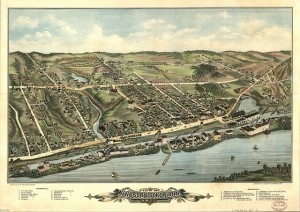
I was recently searching The American Genealogist for information and found an article titled “Tradition and Family History.”[1] The article’s opening lines are: “Tradition is a chronic deceiver, and those who put faith in it are self deceivers. This is not to say that tradition is invariably false. Sometimes a modicum of fact lies almost hidden at its base.” As a researcher, I have done quite a few cases that involve family traditions, and the article made me think about some of the stories that I have been told about my family. Continue reading Tradition as deceiver
A Victorian genealogist
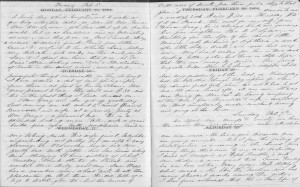
One of the mysteries of the Regina Shober Gray diary is why it came to be part of the NEHGS collection. It is an account of daily (or weekly) life, written between January 1860 and December 1884, and for many of the volumes Mrs. Gray is observant about the relationships of her friends and acquaintances, but far less interested, evidently, in the genealogy of the Shober, Gray, and Clay families.
That all changes, however, in March 1874, at tea with one of her nieces: Continue reading A Victorian genealogist
Public genealogists

I was recently a guest lecturer for a graduate museum studies class as part of the American Indian Studies program at Minnesota State University, Mankato. When I agreed to speak to the class I assumed I would be focusing on my academic work: my work as a public historian, work outside of genealogy. I was surprised to find that the students were most interested in discussing my genealogical work in the context of public history. Continue reading Public genealogists
Surname maps for genealogical research

My nineteenth century immigrant ancestors have caused me a lot of headaches. With the exception of my Muir ancestor, Robert, who listed his specific birthplace, my immigrant ancestors were very vague in listing their birthplaces on records in the U.S.
Though most of my ancestry is Irish, I have a German line that has always interested me. My great-great-grandfather, John Henry Hampe, came to the New York in 1872, and eventually moved to Boston. Though he claimed to have been naturalized in later census records, I was never able to locate a naturalization record for him, which I hoped would list his birthplace. Continue reading Surname maps for genealogical research
Verify what?
 There appears to be a bit of trepidation among new researchers about what is meant by “verifying” sources. It probably sounds horrendously difficult, time consuming, and redundant, but it doesn’t have to be as hard as some would think – and any time spent spent “auditing” sources can return great benefits. Here are a few pointers.
There appears to be a bit of trepidation among new researchers about what is meant by “verifying” sources. It probably sounds horrendously difficult, time consuming, and redundant, but it doesn’t have to be as hard as some would think – and any time spent spent “auditing” sources can return great benefits. Here are a few pointers.
When assessing whether a source, or part of a source, needs verifying, consider the following: Continue reading Verify what?
Multimedia sources for family research
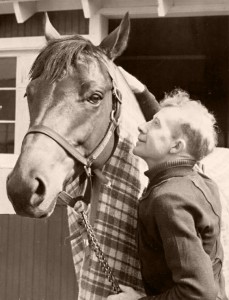
When the movie Seabiscuit (2003) was released in theaters, my family and I decided to throw our own version of a Hollywood movie premiere party. Seabiscuit was a well-known racehorse during years of the Depression. My mother’s paternal aunt, Agnes Conlon, was the wife of John “Red” Pollard, a jockey who rode Seabiscuit in a number of races. I saw the movie with fifteen of my relatives, followed by a get-together at my aunt and uncle’s home. Although my great-aunt Agnes was not included in the storyline of this movie, it was fun to watch Tobey Maguire portray my great-uncle Red.
Red Pollard and Seabiscuit were viewed by many as underdogs. Pollard suffered various injuries throughout his racing career, including an injury which resulted in blindness in his right eye. He kept that a secret, out of fear that he would not be allowed to ride. Continue reading Multimedia sources for family research
Accidental geography
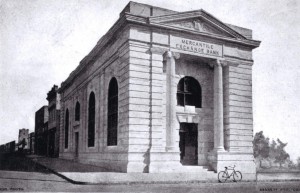
During my recent sabbatical, I made a visit to Jacksonville, Florida, to see one of my great-grandfather’s earliest commissions, the 1902 Mercantile Exchange Bank (today the Old Florida National – or Marble – Bank). I reached Jacksonville during a torrential downpour, although the skies cleared (briefly), allowing me to take photos of the building as it stands today. Continue reading Accidental geography
“If the shoe fits”

David Allen Lambert’s April post on livelihoods inspired me to consider my own “family’s business.” In looking at my ancestry, one occupation pops up again and again and again: shoemaker. From Great Migration immigrants to Italian calzolai to French-Canadian shoe factory workers, my ancestors knew shoes.
The earliest shoemakers or cordwainers to New England arrived in 1629.[1] My ancestor (on my father’s side) Anthony Morse (abt. 1607–1686) arrived in Newbury aboard the James in 1635 with his brother William. Both appear on a passenger list as shoemakers.[2] Continue reading “If the shoe fits”